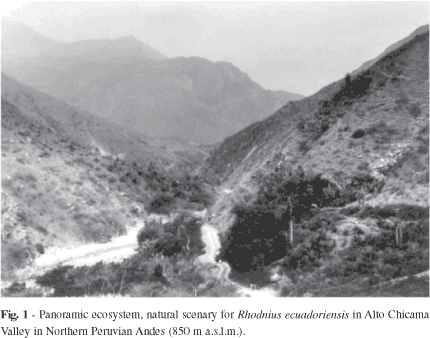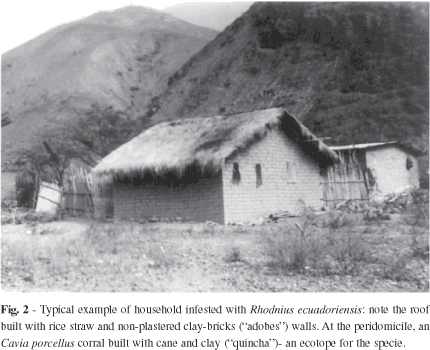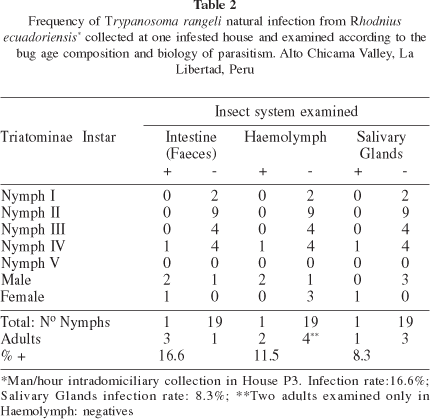Two passive methods in the assessment of intradomiciliary infestation by Rhodnius ecuadoriensis were tested: (i) the Gomes Nuñez sensor box (GN), (ii) sheets of white typing paper and (iii) one active timed manual method. The study was carried out in the Alto Chicama River Valley, Province of Gran Chimú, Department of La Libertad. The study design consisted of an initial searching of triatomines inside of the domestic environment by the manual capture active procedure (man/hour) covering all the studied houses. Then, matched pairs of GN boxes and paper sheets were simultaneously installed in the bedrooms of 207 households distributed in 19 localities. A comparative prospective trial of these passive detection devices were monitored at 2, 4 and, finally 6 months follow-up. Parasitological Trypanosoma rangeli and/or T. cruzi infections were investigated in two houses with high level of infestation by R. ecuadoriensis. 16.9% of the 207 households investigated by an initial active manual method were infested with R. ecuadoriensis. The proportion of infested houses fluctuated from 6.2 to 55.5% amongst the 19 localities investigated. T. rangeli natural infection was detected in R. ecuadoriensis specimens collected in two households. Parasite rates in the bugs ranged from 16.6 to 21.7% respectively. The most striking fact was an average rate of salivary gland infection ranging from 7.4 to 8.3%. At the end of the sixth month period, a cumulative incidence of 31.4% of positive GN boxes against 15.9% for paper sheets was recorded. All three methods combined detected domestic infestation in 129 (62.3%) of the 207 houses studied in the 19 localities. The range of houses infested varies from 6.7% to 92.9%. In areas with low bug density infestation rates, the methodology experienced in our studies, seems to be the best choice for investigations on domestic R. ecuadoriensis populations.
Triatominae; Rhodnius ecuadoriensis; Detection methods; Domestic populations; Peru






